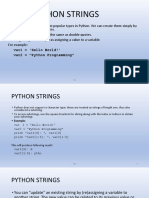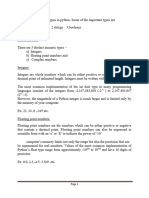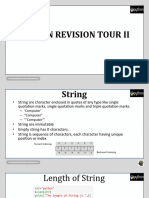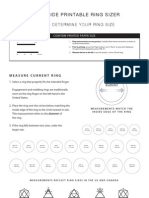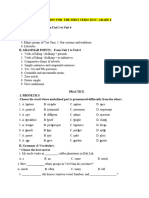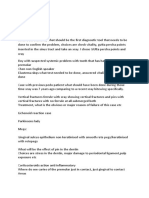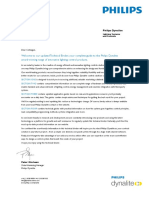0% found this document useful (0 votes)
59 views20 pagesUnit4 Part1
Strings in Python can be defined using single or double quotes and allow multiline strings defined using triple quotes; characters within a string can be accessed using indexes starting from 0; Python strings support various built-in methods like lower(), upper(), split(), join(), replace(), and format operators like %s for formatting strings.
Uploaded by
Saif AliCopyright
© © All Rights Reserved
We take content rights seriously. If you suspect this is your content, claim it here.
Available Formats
Download as PDF, TXT or read online on Scribd
0% found this document useful (0 votes)
59 views20 pagesUnit4 Part1
Strings in Python can be defined using single or double quotes and allow multiline strings defined using triple quotes; characters within a string can be accessed using indexes starting from 0; Python strings support various built-in methods like lower(), upper(), split(), join(), replace(), and format operators like %s for formatting strings.
Uploaded by
Saif AliCopyright
© © All Rights Reserved
We take content rights seriously. If you suspect this is your content, claim it here.
Available Formats
Download as PDF, TXT or read online on Scribd
/ 20





